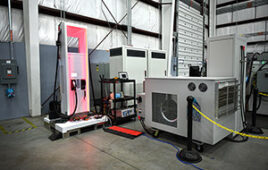US greenhouse gas emissions and capture, regionally
MADISON, WI, AUGUST 11, 2010 ? A new report, Agriculture’s Role in Greenhouse Gas Emissions and Capture, commissioned by the American Society of Agronomy, Crop Science Society of America, and Soil Science Society of America, examines the evidence for greenhouse gas (GHG) emissions and sequestration in America’s major agroecosystems.
The report summarizes current knowledge of carbon dioxide (CO2), nitrous oxide (N2O) and methane (CH4) emissions and capture across six regions – Northeast, Southeast, Corn Belt, Northern Great Plains, Southern Great Plains, and Pacific – as influenced by cropping system, tillage, and soil management. The report also outlines conservation agricultural systems and practices including: no-till, reduced tillage, cover crops, leguminous green manures, and nutrient-use efficiency – that, when adopted, will result in increased capture and reduced emissions of these GHGs. Additionally, critical knowledge gaps for research are identified. The full report can be viewed online at: https://www.agronomy.org/files/science-policy/ghg-report-august-2010.pdf.
American Society of Agronomy President Fran Pierce said, “This timely report identifies critical knowledge gaps that must be addressed to provide America’s farmers with the management strategies and tools needed to increase carbon sequestration and reduce GHG emissions. Pierce added that, “Adoption of conservation agricultural systems, in addition to reducing emissions of GHGs, also enhances the productivity of our nation’s agroecosystems, thereby ensuring future domestic and global food and energy security.”
According to the Environmental Protection Agency, approximately 6% of U.S. GHG emissions are linked to agricultural activities. Agricultural practices that promote good stewardship of the land will also reduce GHG emissions and maximize soil carbon sequestration, ultimately reducing agriculture’s environmental footprint.
The report finds that although soil carbon sequestration and GHG emissions from agriculture have been investigated for several decades, field validation of models is sorely lacking. Finally, specific areas requiring further research to reduce emissions and optimize capture of GHGs from agroecosystems, including coordinated, long-term field studies and full life-cycle analyses for major cropping systems, are identified.




